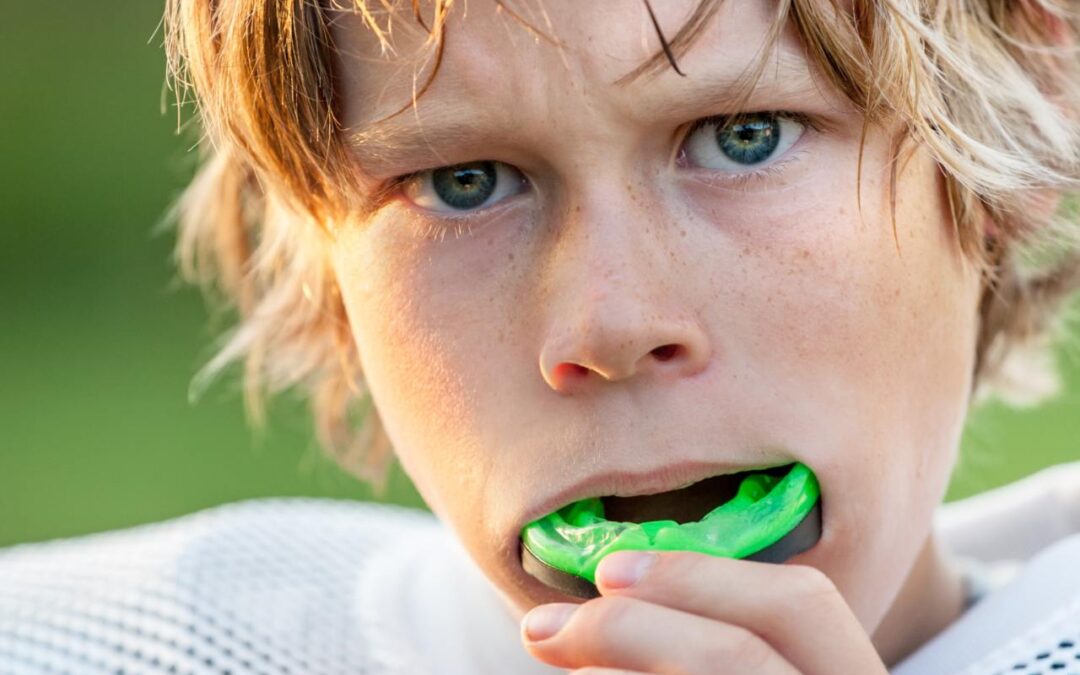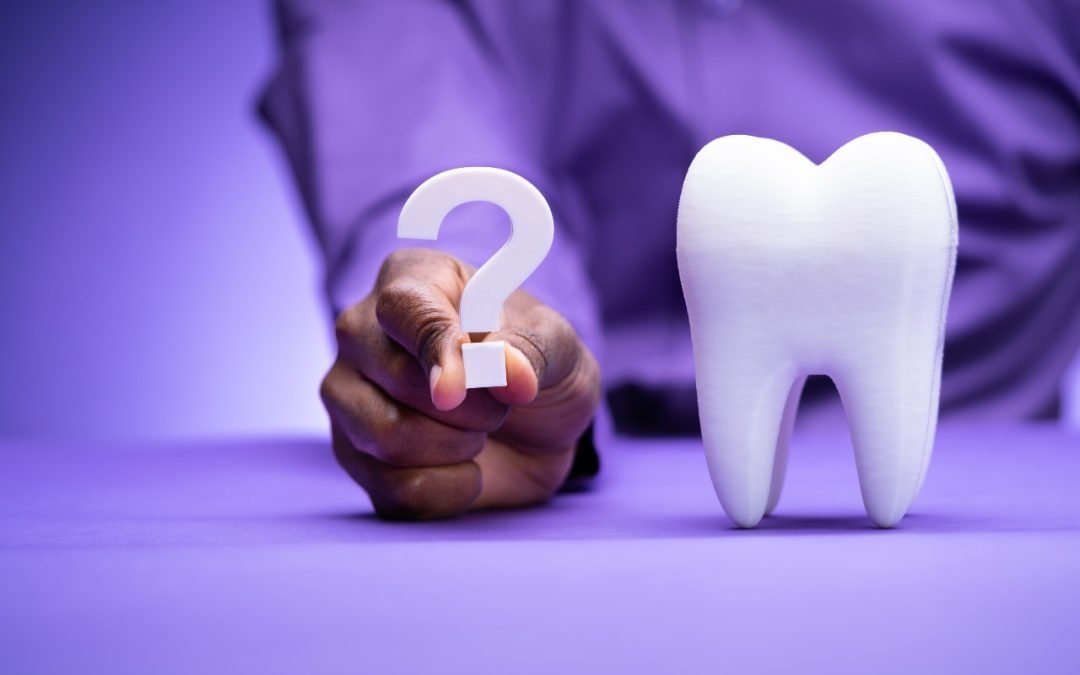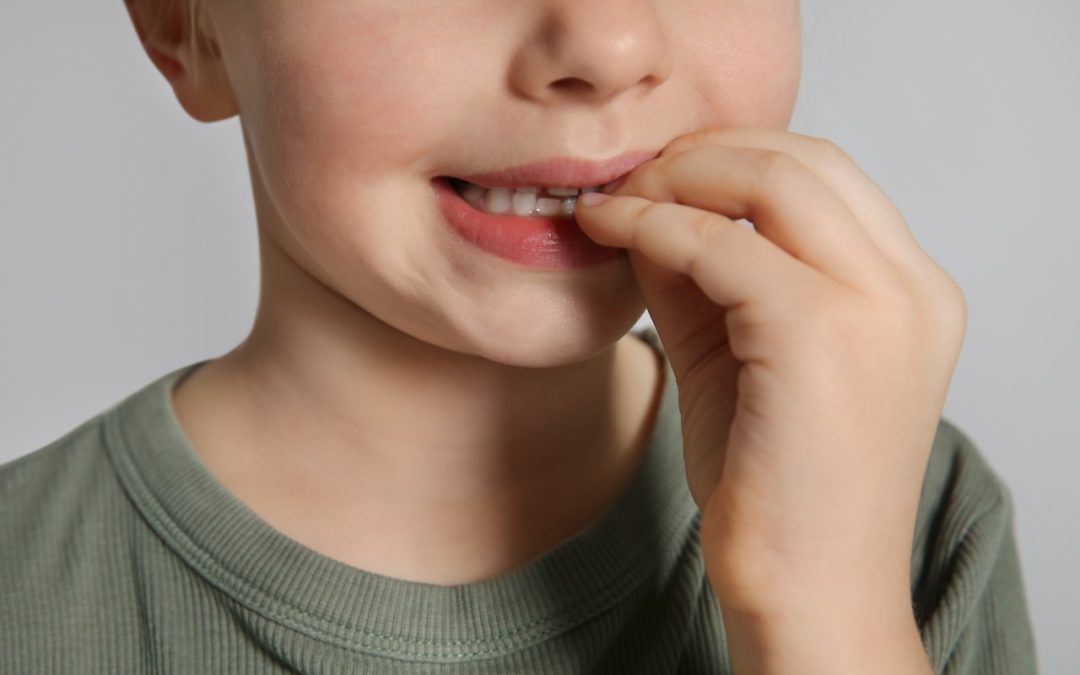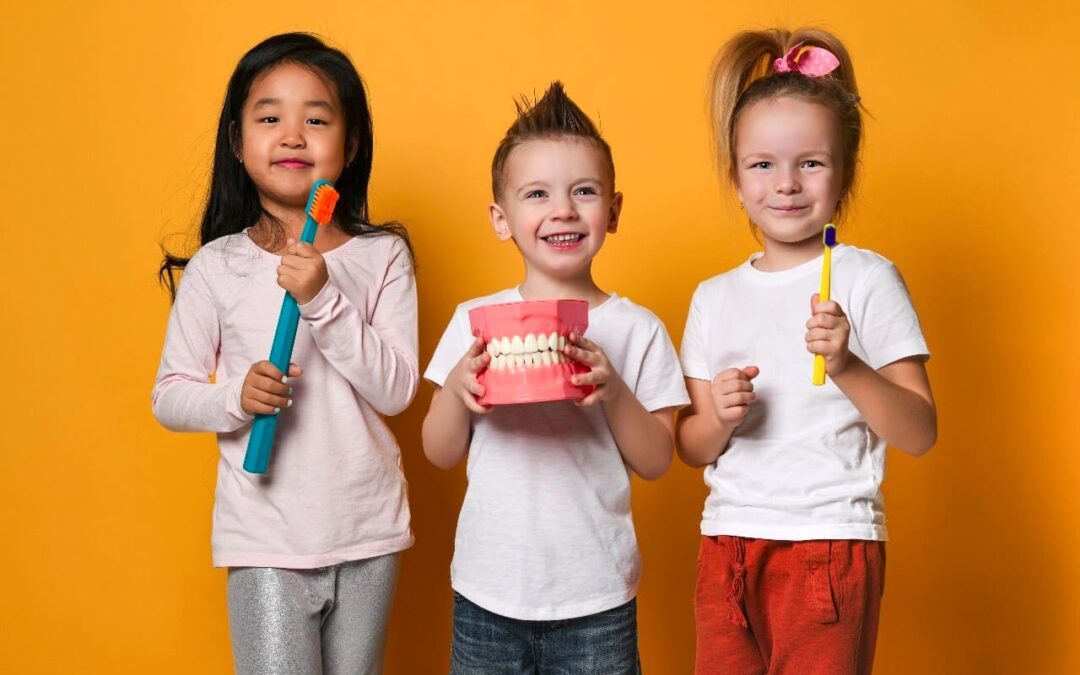


Fact Check – Everything You Need to Know About Pediatric Dentistry
Summer lovin’ fun days are still in full swing, and we know you’ve been enjoying time poolside, neighborhood and friend barbecues, and hopefully have already had a summer vacation trip or have one in the works. Our pediatric dentists and staff enjoy the summer fun, especially appreciating the air conditioning in our offices, all while hearing stories from our pediatric patients about family trips and summer activities.
We want to see your kids’ smiles. Is it time for a pediatric dental office visit? Do you know what types of services we offer? Do you know why you should visit a pediatric dentist instead of a general dentist? Here’s a rundown of everything you should know about pediatric dentistry.
Pediatric Dentistry FACTS
- Did you know pediatric dentists have more training than general dentists? Pediatric dentists complete an additional two to the three-year unique program following dentistry school. This additional training is specific to pediatric care, which means different sized tools and techniques for procedures. Additionally, their learning and training are focused on children’s psychological and physical development from infancy through their teenage years.
- Dental hygiene habits start in infancy. Even before their first tooth, you should gently cleanse their gums with a soft, wet washcloth (be sure it’s clean!) after breastfeeding or bottle feeding. Once that first tooth has popped, use an infant toothbrush to build the habit of brushing it in the mornings and the evenings before bed.
- Your little one should have their first dental visit either when they turn one 3year old or when their first tooth has come in. As with starting dental hygiene habits early, dentist visits should become a routine part of their life, similar to a visit to the doctor’s office. Positive dental experiences are essential. Furthermore, we know that the earlier we start with those, the less likely it is that dental anxiety will be an issue in the future.
- Cavities in baby teeth should be restored, not ignored. Nor should the baby tooth be removed. Why? The primary teeth serve multiple essential functions for the development of your child. Firstly, the cavities can be extremely painful. Secondly, as your toddler is learning to switch from a liquid diet to foods, chewing is essential! Thirdly, the primary teeth help your child’s speech development; the tongue touching the teeth is necessary for most of the sounds we use in our speech. Lastly, the primary teeth also serve as placeholders in our jaws for the permanent teeth. The surrounding teeth may move around if a primary tooth is extracted before its natural timing.
- Dental sealants are a necessary preventative procedure in pediatric dentistry. They are painless and serve to help protect the teeth from cavities. Kids can have trouble reaching the deep grooves and valleys in the molars; after all, motor skills are learned over time, and even adults have trouble with those spots in their teeth. The dental sealants are typically a transparent color or colored to match the tooth. The procedure is quick and painless. We thoroughly clean and dry the tooth before applying a gel to rough the surface up slightly for better adhesion. Following that, the sealant is applied. Once the sealant has dried (typically, we use a blue light), the procedure is finished. Usually, your child can eat at their next snack or mealtime without a problem. Dental sealants have been proven to reduce the risk for decay in molars by up to 80%. For more information about sealants, click here.
- Utah Pediatric Dentists can help you with breastfeeding. Each of our locations has the CO2 LightScalpel laser, and our pediatric dentists have been specially trained in its proper use. This cutting-edge technology allows us to help breastfeeding mothers whose babies have a lip tie or tongue tie. We have had mothers travel to see us from hundreds of miles away because the CO2 laser is proven to be a better, more effective, and less painful process than other tools or technologies. Read here for more information about how our CO2 laser may help you and your baby.
- We recommend mouth guards for all sports, not only contact sports. A broken, chipped tooth that has been knocked loose can be painful and alarming for your kid. More than 80 million kids nationwide participate in sports, and studies have shown that athletes using mouth guards are 82-93% less likely to have a dentofacial injury. Protect those smiles, and avoid painful mouth injuries by talking with your pediatric dentist about a mouth guard. For more information about mouth guards, click here.
- Most kids get cavities. Don’t feel guilty, parents, even when you’re a champion for moderation in sweets. Moreover, you try to limit sodas and sugary drinks, but the truth is that most kids get cavities. In fact, according to the CDC, over 52% of kids between the ages of six and eight have had a cavity in a primary tooth. What does this mean for you? The meaning for you is two-fold: number one, don’t beat yourself up about it, and number two, talk to your pediatric dentist about preventative care, your dental hygiene routines in the house, and schedule biannual teeth cleanings.
Schedule Your Biannual Checkup for Your Kids with Utah Pediatric Dentists
We care about our community and our patients and their families. Come and see us; we want to hear about your summer. Show us those smiles, and tell us summer stories while we clean your kids’ pearly whites. We have three convenient locations in the Salt Lake City area (Bountiful, Taylorsville, and Stansbury Park), all fully staffed and equipped so your kids can receive the best care.

Why is My Child’s Tooth Grey? Grey Teeth Explained
While the majority of our population is in fact, not dental experts, society actually as a whole has a few very firm (and correct) understandings and expectations when it comes to the topic of healthy teeth.
We expect our babies to grow the first few adorable little whites within the first year. Most homes generally have a routine to brush teeth in the mornings and again at night before bed. We teach our children to put their lost teeth under their pillow for the tooth fairy, and we associate healthy smiles to the general color category of white. So, what does it mean then, when one of your kids’ pearlies is actually a grey color?
A grey tooth is what we call a necrotic tooth or pulp necrosis. This means that the pulp of the tooth has suffered damage to its blood supply. Without proper blood supply, the tissue begins to die, thereby changing the color of the tooth from white to grey.
Why is My Child’s Tooth Grey?
The potential causes of a grey tooth include the following:
- Dental trauma – this is the most likely cause of a necrotic tooth in children. One of the reasons we strongly advise parents to invest in mouth guards for kids who play sports of any kind is because the use of mouth guards can actually reduce the chances of a dental trauma injury by 73%-83%. Nevertheless, even with the use of mouth guards while engaged in sports activities dental trauma injuries can occur. An accidental elbow to the face, or a head first tumble for your walking toddler. These injuries can occur even with the best of safe guards in place. If your child has suffered a dental injury such as a chipped tooth or a tooth has been knocked loose or all the way out, follow these steps and give us a call immediately. Quick reactions can save the tooth.
- Severe and untreated tooth decay – this cause is less likely if you’re keeping your kids to the recommended biannual cleaning and checkup schedule in addition to encouraging healthy dental hygiene routines at home.
- Gum disease – another cause avoidable with healthy dental hygiene at home and routine checkups and cleanings at your local pediatric dentist.
Can a Grey Tooth Be Saved?
Actually, a grey tooth can be saved if action is taken quickly enough. When the whole of the tooth is mostly intact in spite of the dead or dying pulp tissue within, measures can be taken to save the tooth itself. For this we may perform a pediatric pulpotomy or a root canal.
This means we must first create a hole within the enamel to get inside the tooth to remove the infected or decaying pulp from the inside of the tooth. Next a healing medicine is applied to soothe the nerves and treat any bacteria attempting to grow (which can spread to the root and cause an abscess if untreated). Once that part of the treatment is completed, we reseal the entry and create a cap to cover the tooth. If the tooth in question is a baby tooth (primary tooth) we may opt to cover the entry with a composite filling instead of a cap. A composite filling is a more economic route, and only appropriate in the case of a primary tooth because the tooth’s lifespan is only a few years as opposed to if it were a permanent tooth in question.
Does a Dead Baby Tooth Need to Be Pulled?
In general, we avoid tooth extractions whenever possible. The primary teeth, serve as place holders for their permanent teeth and our bodies generally allow primary teeth to loosen and fall out naturally in accordance for the timing of the eruption of the permanent teeth. Additionally, primary teeth serve to help our children chew and eat foods properly and develop proper speech patterns.
Nevertheless, if your child has a necrotic tooth that is causing severe pain, an infection in the gums or spreading to other teeth, a pediatric pulpotomy may not be appropriate. In these rare circumstances, we may need to simply extract the tooth. For this to be necessary your child would likely be experiencing severe tooth pain, therefore we urge parents to listen to their children when they complain of tooth pain. Don’t wait for it to become severe before scheduling an appointment for a consult.
What if the Teeth Have Grey Spots?
If the tooth or teeth are not wholly grey but instead have grey or black spots or streaks, that doesn’t necessarily mean necrosis is to blame.
These grey colored spots may be indicative of too much iron in their diet. Iron supplements, fortified cereals, or iron-rich water may be to blame. When iron is the culprit, assist your child with tooth brushing for a time and they will disappear.
Grey spots could also be an indication of over exposure to fluoride. Is your child using an appropriate amount of toothpaste when they brush? Are they spitting out the toothpaste or swallowing it instead?
If grey lines or spots are visible near the gum line, they could be indicative of decay, because that area of the tooth can be the hardest for kids to brush properly. Are you taking a turn to help them brush at night before bed?
Call Utah Pediatric Dentists and Schedule a Consult
In any of the aforementioned cases, it is important to seek advice and assistance from your pediatric dentist. We can determine the cause, and appropriate treatment while providing you and your child with reassurance and choices about the best way to move forward with a healthy smile.

Summer Parties Can Be Fun for Your Smile Too
Summer’s here and we’re so excited about it! A break from the homework and the out-of-the-house rush in the mornings without forgetting backpacks or snack packs is due. Pool parties, barbecues, grill parties, sports team tournaments, rec league games, and all the other summer fun activities are already bringing smiles to your kids’ faces and sweetening their dreams. Nevertheless, those same activities that make them smile, can be hard on those very same smiles. What do we mean by that? Well, the snacks, the drinks, and the types of foods we ingest at these parties can be harmful to our teeth. With this in mind, we’ve put together a list of tips for summer fun to help you and your kids take care of their smiles.
Hot Tips for Healthy Summer Smiles
- Choose Crushed Ice: This one may seem like it’s coming at you out of the left-field, but it’s a great tip that’s easy to gain your kids’ approval for. The truth is, that crunching on ice cubes is harmful to the enamel on our teeth. Crunching ice can crack the enamel of the tooth which can result in cold sensitivity and increased vulnerability to cavities. Add to that, the potential for actually chipping or cracking a tooth, which is a legitimately shocking and even painful experience, do we need to say more? Bottom line, everyone wants ice-cold drinks, especially in the Utah summer heat, and we can’t begrudge anyone that desire, so here’s your workaround. Choose crushed ice whenever possible!
- Mouth Guards Make a Difference: Just because school sports are on a break, doesn’t mean your kids won’t be playing this summer. Whether it’s competitive tournaments, or a more casual rec league doesn’t matter when it comes to the propensity for dental emergencies. Mouth guards are essential for any sport. A large portion of our emergency dental visits to the office are a result of a broken or chipped tooth from a ball game, a bike crash, or simply falling on the wet, slippery surface by the pool. Mouth guards will protect their teeth in those types of situations, even the more economical versions found at your local store. Give us a call to learn more about a custom-fitted mouth guard that will have the advantage of increased comfort.
- Ensure Crunchy Veggies Are Available: You won’t be the menu master at other people’s home parties, but you sure are for your own! When you’re planning a summer bash, make sure you put out vegetable platters with crunchy carrots, celery, bell pepper, broccoli, cauliflower, and more. Go further, and integrate these vegetables into your daily snack options for your kids. Take a morning or afternoon and prep them by cleaning, peeling, and slicing so they’re easy to grab or pack if your kids are headed out the door. Not only are vegetables rich in vitamins, but the crunchiness serves as a scrubber for the teeth, helping to remove sugars or other food debris that is otherwise lodged in their teeth. Also, why not bring a veggie platter to your neighbor’s pool party?
- Lemonade in Moderation: Who doesn’t love a lemonade or a limeade in the summertime? Your teeth, that’s who. These delicious summer drinks are a double whammy on teeth: the citrus runs an assault the enamel while the enormous amount of sugar dives in and hides in the nooks and crannies looking for vulnerabilities. We generally prefer to avoid doling out a hard ‘no’ on anything as we know that kids often love what they can’t have, yet we encourage these types of drinks to be limited. Also, after a limeade or a lemonade follow it up with a generous swig of water. Swish the water around and spit it out to help wash away residue citrus and sugars.
- Refillable Water Bottles: We love the benefits of water, as demonstrated in the aforementioned lemonade tip. In general, swishing and then spitting a mouthful of water after any snack or meal that has sugars, sauces, or stickiness is highly recommended. When your kids are out and about, they are less likely to splurge on a soda or other sugary drink if their water bottle is already on hand. The same goes for you, parents. Carrying around your water bottle sets a positive example for your kids, and will help you moderate the temptation to buy yourself a cold sugary drink when you’re sitting in the sun watching a game, or hanging by the pool or grill. Other benefits to utilizing refillable water bottles include the fluoride benefit from the city’s water supply, and the cash benefit as well. $1.50 (or more) every day adds up.
- Travel Toothbrush and Toothpaste: At any local drugstore, you can find travel-sized toothpaste and toothbrushes that will fit easily into your purse, your kid’s backpack or sports bag, and even the console of your car. Make brushing teeth a priority, even when your family is on a road trip or weekend getaway.
- Schedule a Cleaning: The majority of dental insurance plans these days cover two cleanings per year. When was the last time your kids had a cleaning? If you can schedule around vacations, getting in for cleanings during the summer is easier than pulling them out of school, or utilizing the short afternoons Monday through Friday during the school year. Utilize your dental plan to its maximum benefit, and schedule cleanings for your kids this summer.
Call Utah Pediatric Dentists Today
We have three fully equipped and staffed office locations waiting to hear from you. Our team of staff is dedicated to happy kids with healthy smiles. We’re just a phone call away, and look forward to hearing from you! Happy summer, we hope you enjoy it to the fullest!

7 Kids Dental Health Habits for a Happy New Year
The new year is here folks, and we’re going to start it off right. Dental health and hygiene may not be on your radar for new years’ resolutions, but they should be! Prevention is a major part of happy and healthy smiles for children in your community, and that means more than just regular trips to your pediatric dentist. Here are our top dental health habits just for you!
Dental Health and Hygiene Habits
1. Brush teeth twice per day for two minutes. Mornings before school, and at night before bed are what we aim for. There are fun songs about brushing teeth, or time a song that your little ones enjoy and put it on repeat for two minutes. Brushing teeth should start as soon as the first tooth erupts. Read all about dental care in babies (it actually starts before the eruption) in our guide, ‘Baby Teeth: Eruption Timeline and How to Care for Them‘.
2. Include the tongue as part of brushing. We don’t always consciously think about it, but our tongues actually do quite a bit of work to clear debris between our teeth, and its very presence in the mouth means it is in contact with the same sugars and bacteria as our teeth. Be sure to incorporate a few brush strokes of the tongue into the two minutes. To learn more about how the tongue is a visual indicator of our health, read all about it in our post, ‘Is My Child’s Tongue Healthy?‘
3. Take your child to the store and let them pick out their own toothbrush. Letting them select their toothbrush will give them a sense of responsibility and ownership of their dental health. There are all sorts of fun colors and characters, so let them have some fun with it.
There are electric toothbrushes being marketed for children, however, we encourage you to research a bit before you buy. We wrote a guide for parents about this topic, ‘What’s the Best Electric Toothbrush for Kids?‘, hint (there’s only one on today’s market that has ADA approval).
4. Switch toothbrushes out every three months or sooner if you notice the bristles are worn. With frequent and proper use, those toothbrush bristles will wear out. Bristles that are worn on a toothbrush can actually harm your gums by wearing down the enamel and even causing your gums to recede. Furthermore, the fact is, worn-out bristles simply don’t clean properly. They bend away from the surface instead of stretching into the nooks and crannies of the teeth and in between.
Nevertheless, even if the bristles don’t look worn out, you need to replace it on a three-month timeline. Why? Take a look at your broom and you’ll likely notice a buildup of dust or debris on those bristles. Imagine a toothbrush to be similar to a broom. Its job is to brush away bacteria and debris on your teeth. While proper care of your toothbrush means food debris isn’t likely present, over time invisible bacteria will still build up on those bristles. For more information about proper care of your toothbrush, check out our in-depth article: “Toothbrush Care Guide: Everything Parents Need to Know”.
5. Floss at least once a day. Most parents who bring their kids into our offices will agree with our twice a day tooth brushing recommendation, and back it up by their actions. However, it isn’t uncommon to have a parent sheepishly admit that they don’t floss as often as they should. We aren’t here to shame anyone in regard to their dental habits. Odds are high that the parents who don’t floss very often, simply didn’t grow up flossing! Habits that we learn as children can stick with us throughout adulthood! Start out encouraging your kids to floss, and join them yourself. You are never too old to learn new healthy habits, and flossing is one that is a positive habit for everyone. Check out new and interesting flavors, (remember to look for the ADA seal).
6. Invest in a mouth guard for sports. Mouth injuries happen to kids, even if they aren’t playing a contact sport such as football. We recommend mouth guards should be worn for all sports, including biking and skateboarding. Studies show that wearing a mouth guard will lessen the likelihood of dentofacial injuries by more than 82%. A broken or chipped tooth, a root fracture, or a tooth knocked loose or all the way out is considered a dental emergency. Read our step-by-step guide on what to do in that type of situation to prepare yourself, ‘What Do You Do When Your Kid Breaks a Tooth?‘
7. Up your water intake! Most store-bought beverages have a shocking amount of sugar in them (or sugar substitutes) that might be tasty but are terrible for our teeth. It’s unfair to ask anyone to give up all other drinks, but we do think it’s fair to encourage you to increase the amount of water you and your kids are drinking. City water is treated with fluoride which is a vital defense for teeth. Furthermore, water will help rinse away bacteria and sugars from your meals and snacks in between your brushing routine. One way to facilitate more water throughout the day is utilizing a refillable water bottle and taking it with you on errands, and sending it in backpacks to school. When water is within easy reach, your kids are more likely to drink more of it.
Start Off the New Year by Scheduling a Checkup and Cleaning!
It’s never too late to prioritize the dental health of your children (and yourself!) All of the above tips for healthy habits can be applied to each member of your family, regardless of age. Utilize those dental benefits on your insurance this year, and start out by scheduling a checkup and dental cleaning for each of your kids. Preventative care is the bedrock of happy healthy smiles in our community. Give us a call, and we’ll help you start the year of dental strong.

Recent Comments